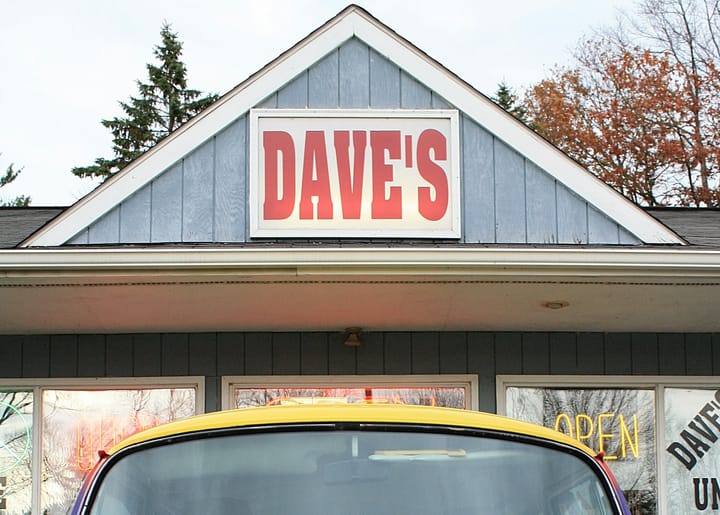14 Innovative Ways to Reframe a Marketing Challenge

In advertising, creativity often means approaching a problem from an entirely new angle. Reframing a marketing challenge can lead to groundbreaking campaigns that capture attention and drive results. This approach isn't just about clever ad concepts; it's a powerful strategic tool that can transform marketing strategies.
For strategists, the art of reframing extends far beyond individual campaigns. It can be applied at every stage of the marketing process, from interpreting client briefs to repositioning entire brands.
The key is challenging assumptions, shifting perspectives, and finding new ways to connect with audiences. Here are 14 innovative ways to reframe that did just that.
- Turn a Negative into a Positive
Example: Virgin Australia's "Middle Seat Lottery". Challenge: The dreaded middle seat on flights. Reframe: Transform the least desirable seat into a coveted prize
Virgin Australia cleverly turned the universally disliked middle seat into something passengers actively wanted by creating a lottery with weekly prizes for those who opted to sit there. This creative approach transformed a negative aspect of air travel into an exciting opportunity.
- Shift the Target Audience
Example: Whiskas' "Meowzer". Challenge: Increase cat food sales. Reframe: Position cats as "low-effort dogs" to intercept dog-related searches
Whiskas took an unexpected approach by targeting potential dog owners. By positioning cats as "low effort dogs," they aimed to intercept Google searches for dogs and promote cat adoptions, ultimately driving up pet food sales.
- Elevate the Everyday
Example: IKEA's "It's That Affordable". Challenge: Demonstrate the value of IKEA furniture in Saudi Arabia. Reframe: Compare furniture prices to everyday items like coffee and toothpaste
IKEA reframed the perception of their furniture's value by comparing prices to common, inexpensive daily items. This approach helped Saudi customers understand the affordability of IKEA products in a relatable context.
- Create Unexpected Associations
Example: Redoxon's "Healthy Treat With A Tasty Twist". Challenge: Promote a health supplement. Reframe: Position the product as a cooking ingredient
Redoxon reframed its health supplement as a culinary ingredient, creating recipes and live streams to showcase its versatility. This unexpected association made the product more appealing and relevant to everyday life.
- Challenge Stereotypes
Example: Made By Dyslexia's "My Dyslexic Thinking". Challenge: Change perceptions of dyslexia. Reframe: Position dyslexia as a valuable skill on LinkedIn
This campaign reframed dyslexia on LinkedIn from a perceived drawback to a valuable professional skill. Challenging stereotypes shifted perceptions positively and highlighted the unique strengths of individuals with dyslexia.
- Leverage Pop Culture
Example: Xbox's "The Birth of Gaming Tourism". Challenge: Reach new audiences for Xbox games. Reframe: Present virtual game worlds as tourist destinations
Xbox creatively reframed their virtual game environments as desirable tourist destinations. This approach tapped into the popular appeal of travel content, presenting gaming in a fresh, enticing light to potential new players.
- Humanise a Cause
Example: Getty Images and Fiftyfifty's "Repicturing Homeless". Challenge: Change public perception of homeless people. Reframe: Give homeless individuals makeovers to challenge stereotypes.
This powerful campaign reframed how the public views homeless people by giving them makeovers. By challenging preconceptions and fostering empathy, it presented homeless individuals in a new light.
- Turn Products into Solutions
Example: Bimbo Bread's "Eco Sponge". Challenge: Increase bread sales to restaurants. Reframe: Position bread as an eco-friendly cleaning solution
Bimbo Bread ingeniously reframed their product as an environmentally friendly way to reduce water consumption when cleaning dishes. This unexpected approach aimed to increase bread orders in restaurants while highlighting sustainability.
- Gamify the Mundane
Example: H&R Block's "It's Tax Season". Challenge: Make tax filing more appealing. Reframe: Present tax preparation as an exciting awards show-worthy event.
H&R Block transformed the typically dreary task of filing taxes into something worthy of celebration. By reframing taxes as an exciting event, they gave Americans a reason to approach this annual chore with enthusiasm.
- Personify Products
Example: Hornbach's "Crown of Glory". Challenge: Make male baldness less taboo Reframe: Present baldness as a symbol of masculinity and strength.
Hornbach, a DIY store chain, reframed male baldness as a "Crown of Glory" - a visceral symbol of manhood. This creative approach aimed to boost confidence in their target audience of mature men, turning a perceived flaw into a mark of distinction.
- Reimagine Formats
Example: IKEA's "Oddly IKEA". Challenge: Make the IKEA catalog more engaging Reframe: Transform the catalog into an ASMR video experience.
IKEA reimagined its typically boring product catalog as an ASMR (Autonomous Sensory Meridian Response) video. This innovative approach turned a standard marketing tool into content people actively sought, combining relaxation with subtle product exposure.
- Flip the Perspective
Example: Baileys' "#RecipeUnfudged". Challenge: Increase Baileys' usage beyond drinking. Reframe: Position Baileys as a cooking aid that saves baking disasters
Baileys cleverly reframed their liqueur as a secret weapon for salvaging baking mishaps. By showcasing how a splash of Baileys could rescue viral baking fails, they expanded the product's perceived utility and appealed to home bakers.
- Create Artificial Scarcity
Example: Transavia's "Snack Holidays". Challenge: Promote low-cost flights Reframe: Present flights as limited-edition snacks.
Transavia, a low-cost airline, reframed their cheap flights as impulse-buy snacks. By creating specially designed snack packages that were also flight tickets, they tapped into the psychology of limited-time offers and impulse purchases typically associated with snack foods.
- Subvert Expectations
Example: McDonald's "Serve Your Country". Challenge: Recruit new employees. Reframe: Present fast-food work as equivalent to military service
McDonald's subverted expectations by framing its job recruitment campaign in the style of military recruitment. This bold approach highlighted the skills and dedication required in fast-food work, elevating the perception of the job and attracting potential employees.
Reframing is a powerful tool in a marketer's arsenal. By looking at challenges from new perspectives, brands can create innovative campaigns that unexpectedly resonate with their audience. These examples demonstrate how thinking outside the box can lead to memorable and effective marketing solutions.



